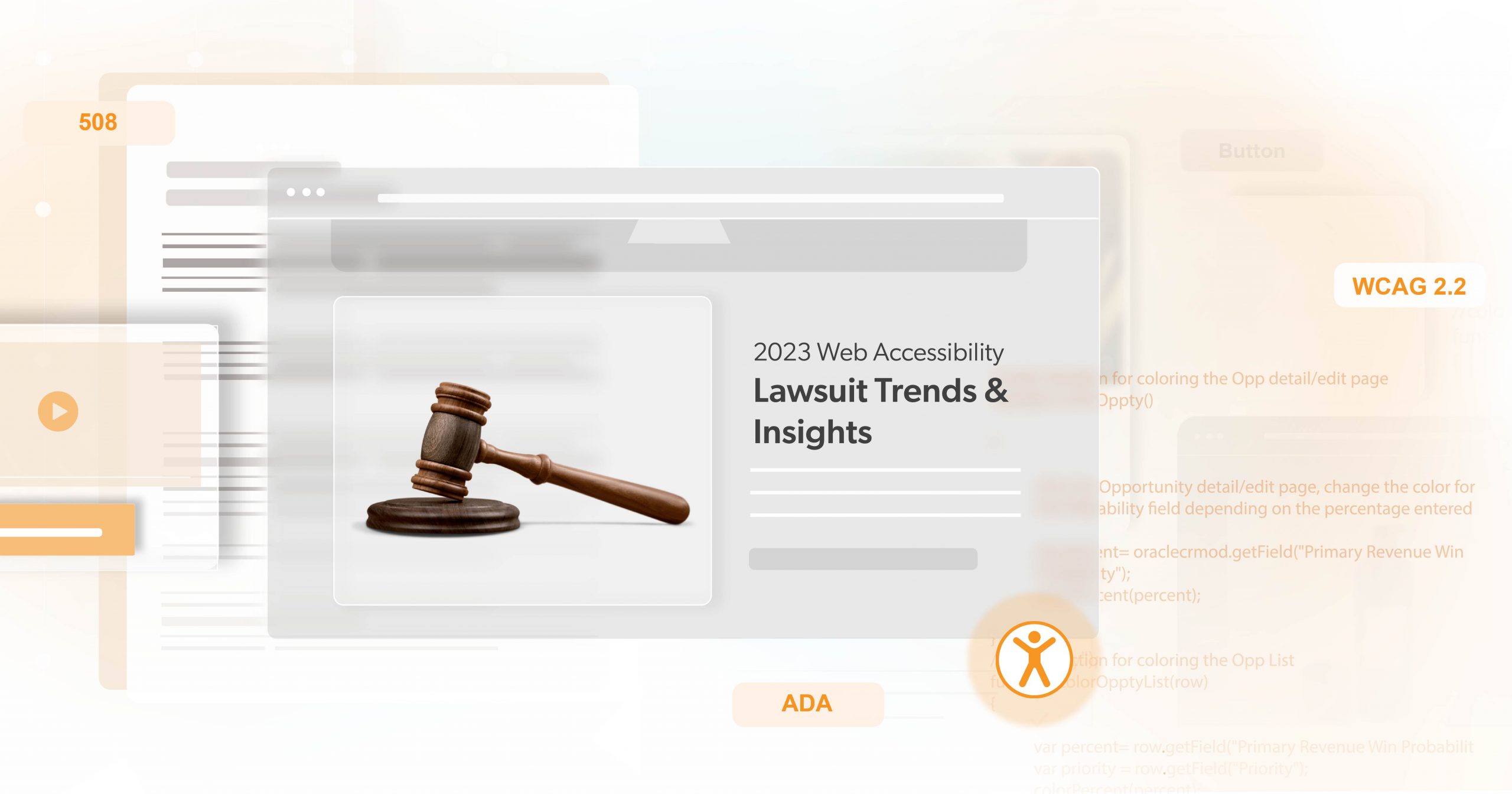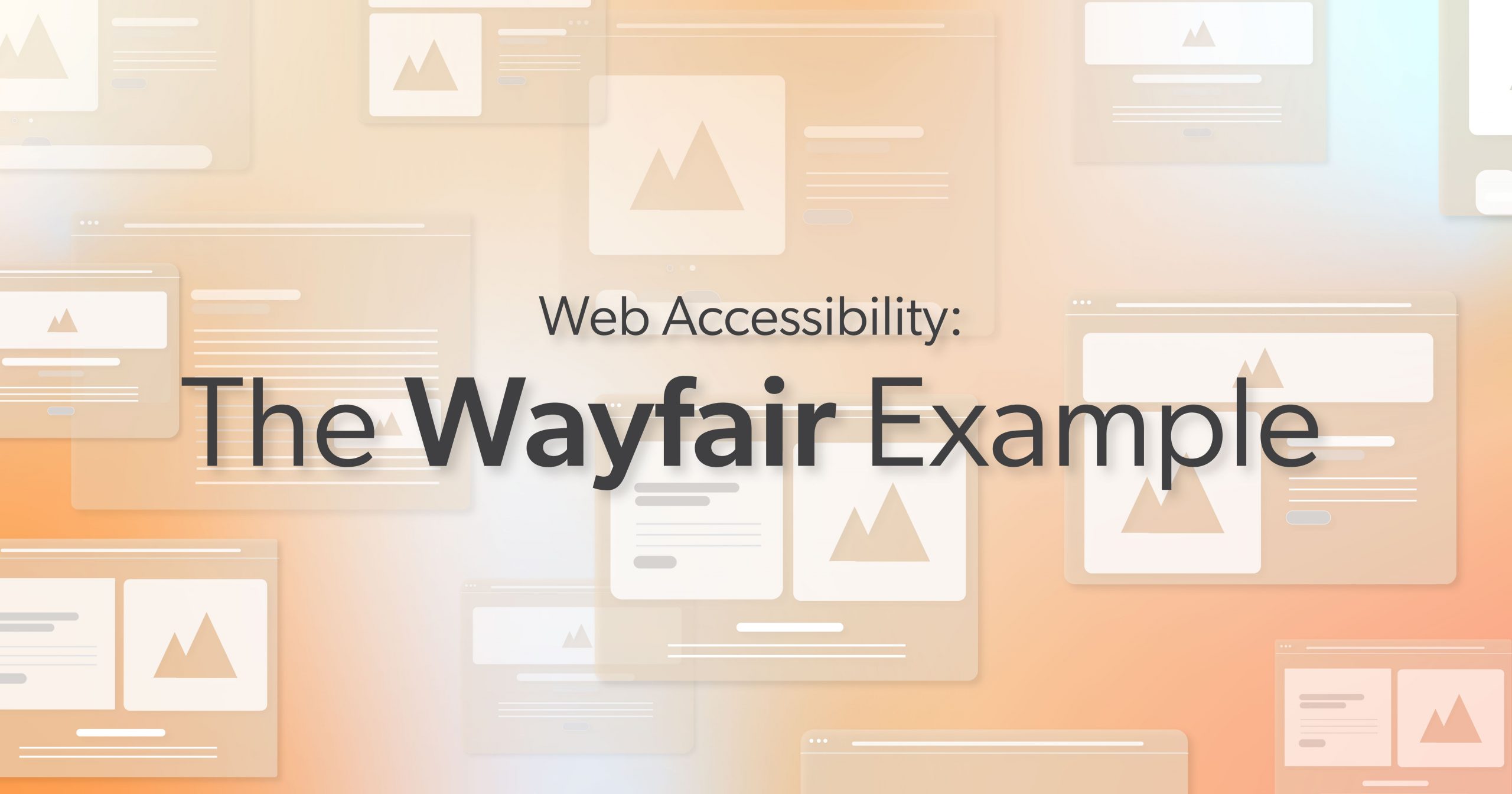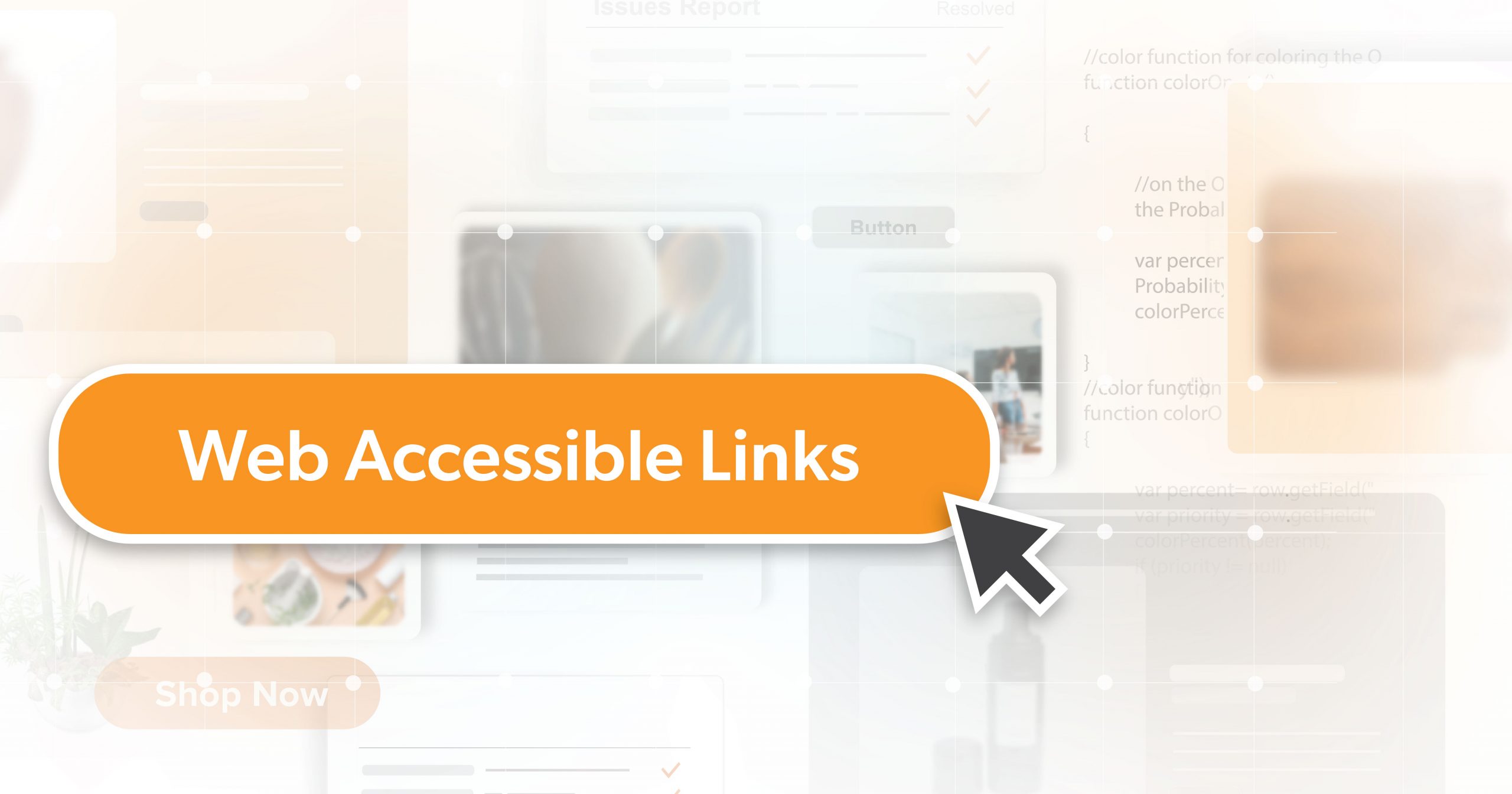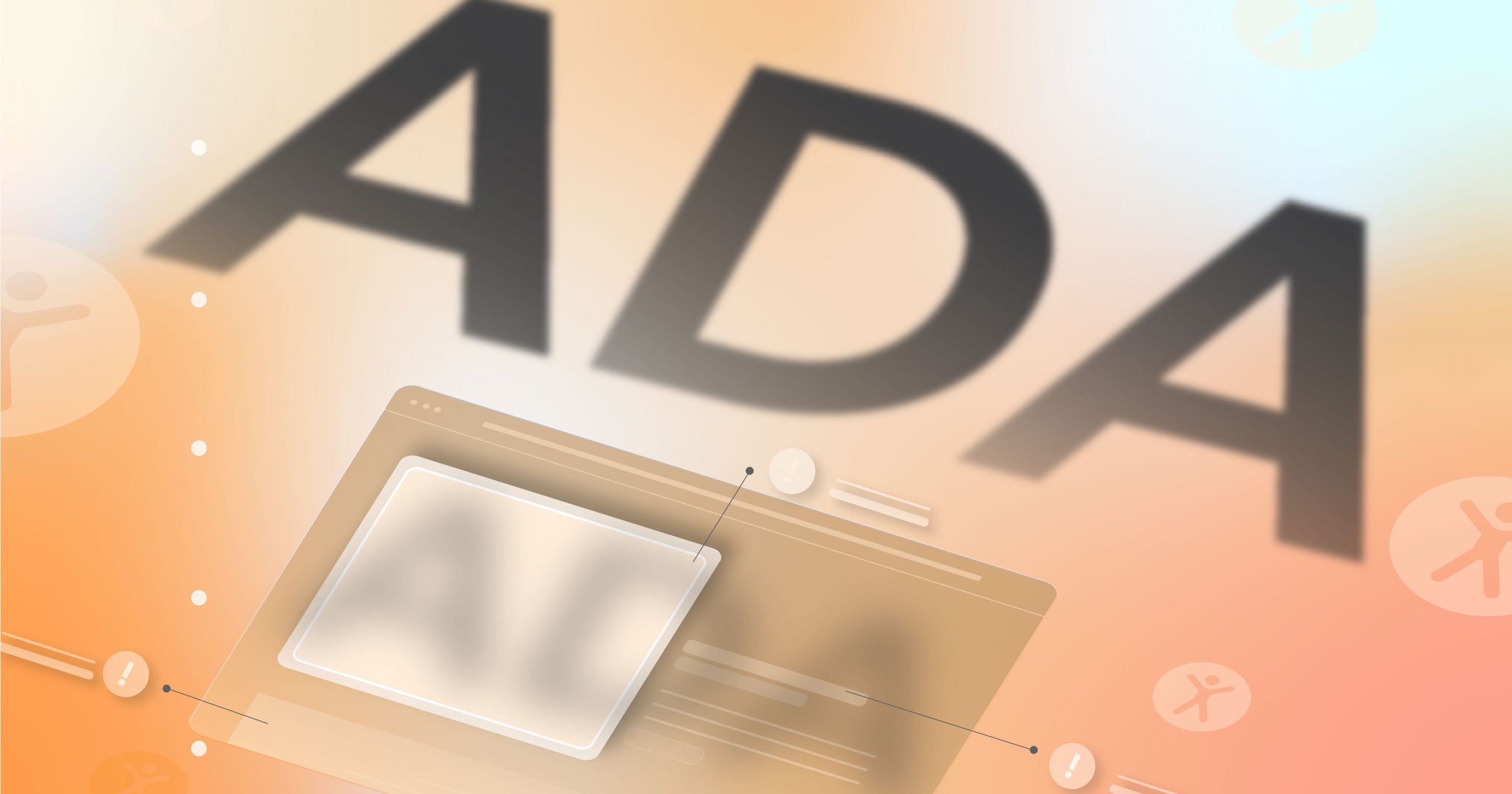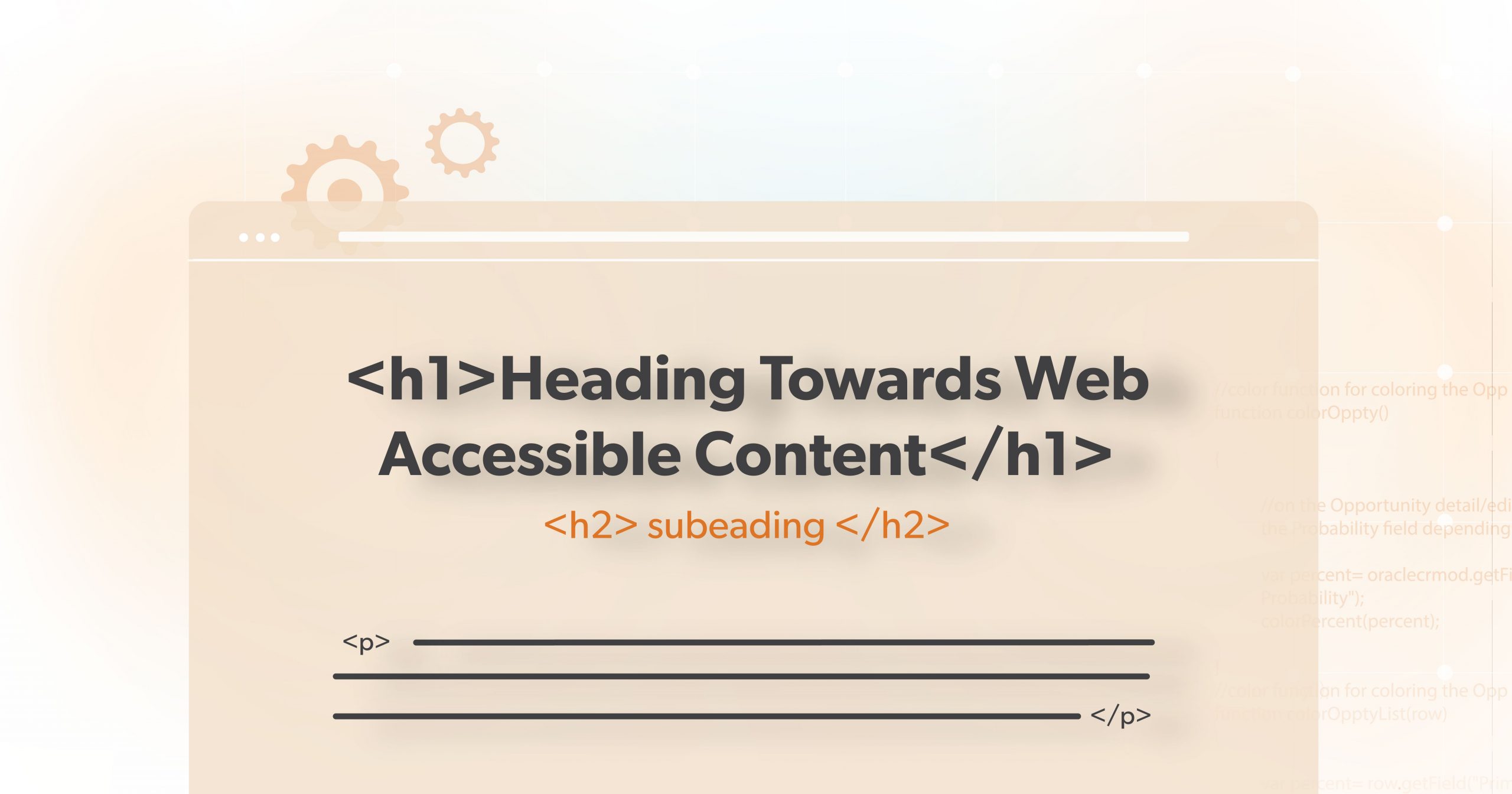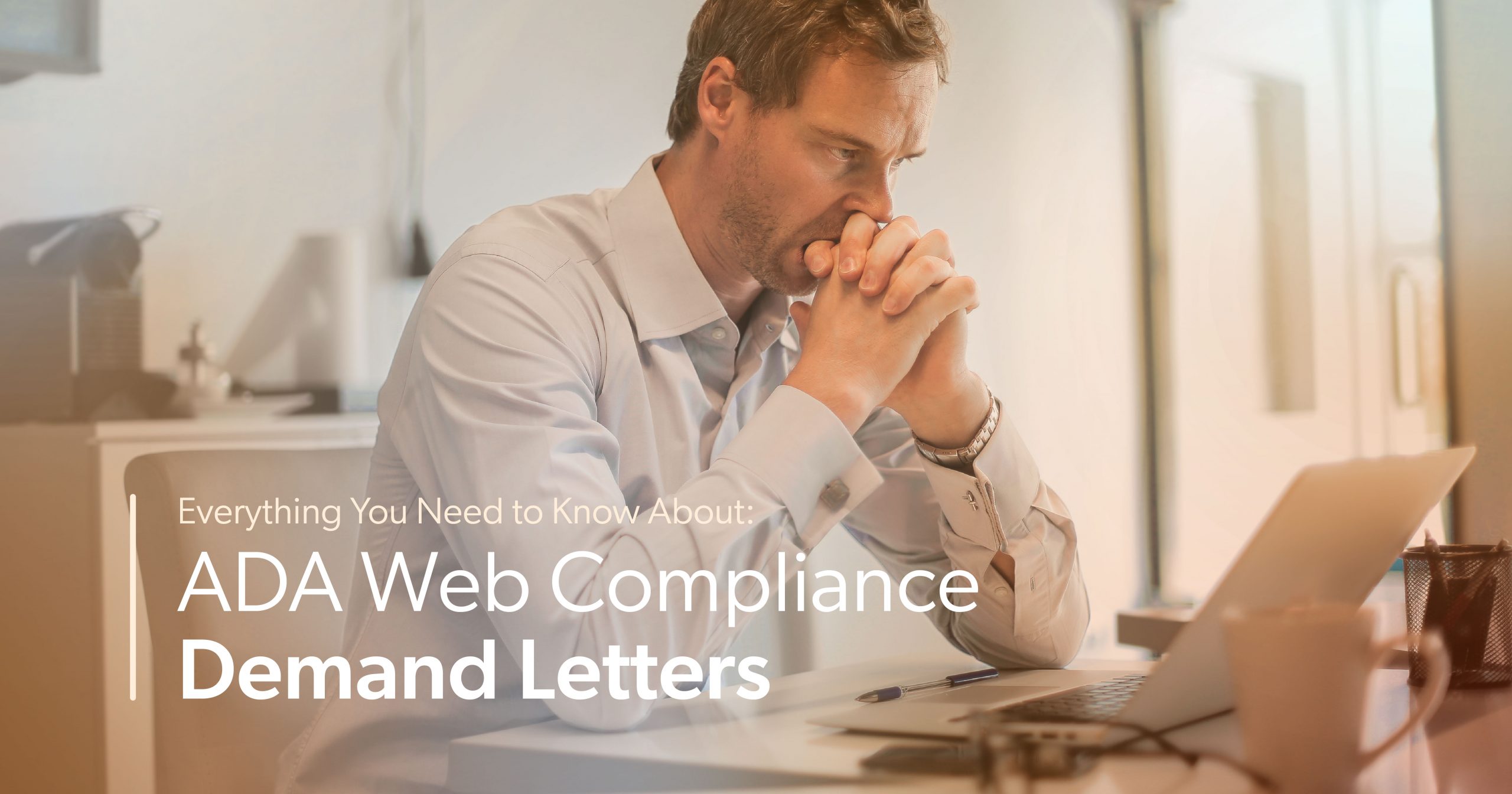For many website owners, ensuring their site is accessible to everyone, especially those with disabilities, is a priority. This makes sense, not only from an ethical standpoint but also from a legal one. Web accessibility has become a hot topic, with the Americans with Disabilities Act (ADA) taking action against websites that fail to provide equal access. One solution that has garnered attention is the use of overlay widgets. However, if you’re considering using overlay widgets to meet these demands, pause! This may not be the solution you think it is.
In this post, we will explore the pitfalls of relying on such solutions and why they may not be the best choice for safeguarding your online business.
What is an Overlay Widget?
In simple terms, an overlay refers to tools or technologies that incorporate third-party code, typically JavaScript, into a webpage to enhance accessibility. Over recent years, these overlays have surged in popularity and are now featured on numerous websites across the internet. Among the many available, UserWay and accessiBe stand out as the top contenders on the market.
For a monthly charge, these tools claim to offer complete ADA and WCAG compliance, shielding them from litigation and an improved user experience for people with disabilities, all by adding just a single line of code to a website.
On the surface, it sounds ideal for website owners wanting a quick solution. But the truth is more complex.
What Do Accessibility Overlays Claim to Offer?
These overlay companies often promise three key concepts to consumers:
- Your website will be fully accessible
- Their technology will automate fixes, removing the need for web accessibility experts.
- Their products will protect you from accessibility lawsuits.
Does it sound too good to be true? It is. While overlays might seem like a cost-effective solution for web accessibility, they might leave hopeful business owners with a target on their backs.
Accessibility Experts Voicing Concern
Experts in web accessibility have expressed skepticism about the effectiveness of accessibility overlays. Many experts argue that these tools may create a false sense of compliance and fail to address the root causes of accessibility issues.
Around 800 experts in accessibility have promised not to support, suggest, or use overlays that pretend to comply with laws or standards automatically. Karl Groves, an industry expert with over 20 years of experience, has put together a detailed fact sheet and statement from these experts, and it’s available on overlayfactsheet.com as a helpful online resource.
But why are these experts opposing overlays? First, we have to talk about ADA Compliance.
What is ADA Compliance?
While using an overlay may help meet some rules in accessibility standards, it cannot ensure
Conformance means meeting or satisfying the requirements of the web accessibility standards. According to Web Content Accessibility Guidelines (WCAG), the ‘requirements’ for web accessibility are called Success Criteria. To conform to WCAG’s guidelines, you must meet or satisfy all the Success Criteria.
Since conforming to a standard involves meeting all its requirements, products that claim to bring a website into compliance but cannot fix all issues should be approached with caution.
Why Overlays Are Not Fully Accessible
Here’s a simplified analogy: Imagine a pothole in the road. Instead of fixing it properly, someone places cardboard over it. It might look covered, but it’s still there, and it’s just a matter of time before someone falls through.
Similarly, while overlay widgets might give the appearance of an accessible website, they often merely cover up underlying issues. The worst part? Sometimes, they introduce new problems.
The Limitations of Accessibility Overlays
While overlays may provide some surface-level improvements, they often fail to address the comprehensive requirements for ADA compliance. Automated fixes can be incomplete or inaccurate, leaving certain accessibility issues unaddressed and potentially leading to legal consequences.
Here’s why:
- Partial Fixes: While overlays can assist in certain areas, like making text bigger for those with vision problems, they don’t treat the root problems in the website’s code, leaving site owners vulnerable to ADA lawsuits.
- Inconsistency: Overlay performance can be unpredictable across different devices and browsers, particularly on mobile.
- False Assurance: Sole reliance on overlays can be deceptive. They detect only about 30% of accessibility barriers. The intricate WCAG guidelines mean that overlays can only handle some necessary adjustments. A hands-on review is needed to find the remaining 70% of issues.
- User Experience: Some overlay tools give users an overwhelming number of choices, making things more perplexing or even creating new hurdles for disabled users.
- Conflicts with Assistive Tools: Many people with disabilities use specific tools to navigate the web. Overlays can disrupt these tools, making the website even less accessible.
To learn more about how overlay widgets fail to make a website compliant, check out our blog post, Why AI & Overlay Widgets Fail ADA Website Compliance.
Overlays Don’t Protect Against Web Accessibility Lawsuits
Many website owners opt for overlay widgets, believing they will shield them from potential lawsuits. However, this couldn’t be farther from the truth. Some advocates argue that these overlays can create a false impression of compliance, attracting attention from individuals keen on holding non-compliant websites accountable or with a desire for a quick payout.
At the 2021 Digital Accessibility Legal Summit, Jeremy Horelick, Jason Taylor, and Richard Hunt discussed overlays being marketed as one-step software solutions for website accessibility. The answer was a clear no when asked if overlays reduce the risk of litigation expenses.
“They absolutely do not. And there are two reasons why this is true. The first reason is simply because they don’t actually fix websites. […]
The other reason is because the law firms, not all the law firms, but many of the law firms that are in this area do not care whether the website is really accessible or not. Their desire is to find something that they can identify as an error, usually by measuring it against WCAG, and if they can find that error, they can file a lawsuit in good faith. Remembering that their goal is to settle the lawsuit as soon as possible.”
Accessibility Overlays Can Make You A Target
Using an overlay widget is like announcing, “I’m trying to be compliant.” But when that compliance is only surface-deep, it can make you an easy target for litigation.
So you might wonder, “Why would an overlay make me a target?” Here’s a deep dive into the mechanics:
Lawsuit Mechanics
Lawsuits related to web accessibility often rely on demonstrating that a website remains non-compliant despite attempts to rectify it. Scanning tools most plaintiff firms use won’t reliably pick up the solutions provided by widgets and overlays. While suggesting an effort to comply, overlay widgets often fall short of genuine accessibility. As such, your site will “scan” in exactly the same way and not at all change the initial filter most plaintiff firms use to determine who to go after. This discrepancy provides an avenue for legal action.
Lawsuit Claims
Most lawsuits nowadays don’t primarily address WCAG compliance concerns. They cite issues of functional use—things that impact a person with a disability’s ability to use a site. However, overlays won’t affect those claims and will often worsen the functionality. Many claims pinpoint overlay widgets’ inconsistent and ineffective nature, emphasizing that they don’t provide a uniform solution for every user.
Public Record Evidence
Implementing a widget or overlay on your website highlights potential shortcomings in your approach to accessibility. This public display could be referenced in future legal proceedings as evidence of your organization’s consistent lack of attention to accessibility. In the context of the ADA, this could be seen as a failure to adapt policies, practices, and procedures to ensure accessibility.
2023 Overlay Litigation Wave
In 2023, we saw 933 websites become targets for ADA non-compliant lawsuits because they relied solely on overlay widgets. This marked a notable 62% increase from the previous year. The legal actions brought against these companies often point fingers at the features and functions of these widgets, claiming they contribute to accessibility issues, along with the common failures outlined in WCAG.
Attorney Richard Hunt, who specializes in digital ADA cases at Hunt Huey PLLC, was among the first to focus on such legal matters. In a post titled “Is there a silver bullet for ADA website accessibility? Sorry, but the answer is no,” he emphasized that using an accessibility overlay or widget won’t protect businesses from ADA lawsuits.
Hunt stated, “If your business wants to avoid getting sued under the ADA because of an inaccessible website an accessibility overlay or widget isn’t going to help you. I can say this with some certainty because in the last two weeks alone five lawsuits have been filed against businesses that use an accessibility widget or overlay on their websites.”
Privacy Concerns
Besides potential legal problems tied to web accessibility, privacy concerns have surfaced. Overlays that automatically activate certain features, such as those for screen reader or speech recognition users, do this by detecting when an assistive technology is in use on the device. This reveals that the person using the device at that time has a disability. In some instances, it even exposes more personal information, like age, ethnic background, or preferred gender. Collecting such data should only happen with the informed consent of the person to whom it belongs.
Privacy Concerns and Legal Consequences
Some overlays keep users’ settings consistent across different websites that use the same overlay. This is achieved by placing a cookie on the user’s computer. When the user activates a setting for a specific overlay feature on one site, the overlay will automatically activate that feature on other sites.
Although the overlay company may believe they are benefiting the end user, the major privacy issue is that the user never agreed to be tracked, and there’s no way to opt out. Because there’s no opt-out option (except for explicitly turning off that setting), this poses a risk under the General Data Protection Regulation (GDPR) and California Consumer Privacy Act (CCPA) for the overlay customer.
What Actions Should Website Owners Take?
For website owners, the lesson is clear. While overlay widgets might seem like an easy fix for web accessibility, they’re anything but. Not only do they fail to address the root accessibility issues, but they also paint a target on your back for potential litigation.
If you’re a website owner considering using overlay widgets, tread cautiously. Instead of looking for shortcuts, invest in a comprehensive web accessibility evaluation and manual review from the experts at 216digital to ensure that all accessibility barriers are identified and addressed correctly.
It is crucial to recognize the limitations of AI and use it in conjunction with other accessibility tools, such as regularly testing and evaluating accessibility compliance through automated and manual audits. By adopting a multi-faceted approach to accessibility, you can minimize the risk of legal action and make sure that digital content is accessible to all users.
Team Up with 216digital
After years of analyzing ADA lawsuits, we’ve discerned the tactics used by law firms to pinpoint websites for groundless ADA claims and how to protect businesses against them. Our team of accessibility experts can also develop strategies to integrate WCAG 2.1 compliance into your development roadmap on your terms to save you from potential legal headaches in the future.
Remember, web accessibility is not just about legal compliance but about creating an inclusive web for all. So don’t wait any longer—find out where you stand by scheduling a complementary ADA Strategy Briefing today.

